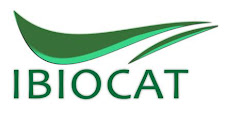Pharma-Ecology
The Occurrence and Fate of Pharmaceuticals and Personal Care Products in the Environment
Publisher: John Wiley & Sons
1. Edition - September 2008
69.90 Euro
2008. 314 Pages, Hardcover
ISBN-10: 0-470-04630-9
ISBN-13: 978-0-470-04630-2
This book provides researchers and scientists important background data on the environmental impacts of pharmaceuticals and personal care products (PPCPs). It highlights the biological effects of pharmaceutical compounds under clinical settings and discusses their pollution, fate, and transport. It stresses some of the ecotoxicological aspects of PPCPs and includes a chapter that links clinical pharmacokinetics/pharmacodynamics (PK/PD) with the kinetics of PPCPs in the environment. This is a key reference for engineers, toxicologists, ecologists, microbiologists, regulatory personnel, and pharmaceutical professionals who develop PPCPs.
From the contents
Chapter 1: PPCP usage in relation to the environment and modes of action.
1.1. Personal care products.
1.2. Pharmaceutical compounds.
Chapter 2: Detection and Occurrence of PPCPs in the environment.
2.1 Detection of PPCPs in the environment
2.2 Occurrence of PPCPs in various environments.
2.3 Excretion as a driver of pharmaceutical occurrence in the environment.
Chapter 3: Ecopharmacokinetics and ecopharmacodynamics.
3.1 Overview of pharmacokinetics and pharmacodynamics.
3.2 Degradation of PPCPs in the environment.
3.3 Role of physicochemical factors in the fate of PPCPs in the environment.
Chapter 4: Ecotoxicity of PPCPs.
4.1 Conventional assessment of the risk.
4.2 Ecological impact of PPCPs on microorganisms and microbial processes.
4.3 Effects of PPCPs on invertebrates.
4.4 PPCP ecotoxicity on aquatic organisms.
4.5 Ecotoxicity of PPCPs on terrestrial wildlife.
4.6 Livestock and Human Health.
4.7 Ecotoxicity of PPCPs on vegetation.
4.8. General considerations in long-term PPCP toxicity.
Chapter 5: Technologies for removing PPCPs.
5.1 Conventional treatment systems.
5.2. Advanced treatment processes.
Chapter 6: Future Needs.
6.1. Improving assessment of the risks from PPCPs in the environment.
6.2. Effect of mixtures.
6.3. Effects of chronic exposure to low PPCP doses.
6.4. Formulation and regimen design affecting PPCP bioavailability, excretion and sorption.
6.5. Use of quantitative structural activity relationships in ecotoxicology.
6.6. Use of genomics in bioassay studies.
6.7. Social responsibility, legislation and policy.
6.8. Need to revisit the drug approval and advertising process.
6.9. Use of prescription records for mapping PPCPs.
References.
Index.
For more information please visit: http://www.wiley-vch.de/
Laura Cipollina – IBIOCAT, Divisione Marketing e Commerciale

Nessun commento:
Posta un commento